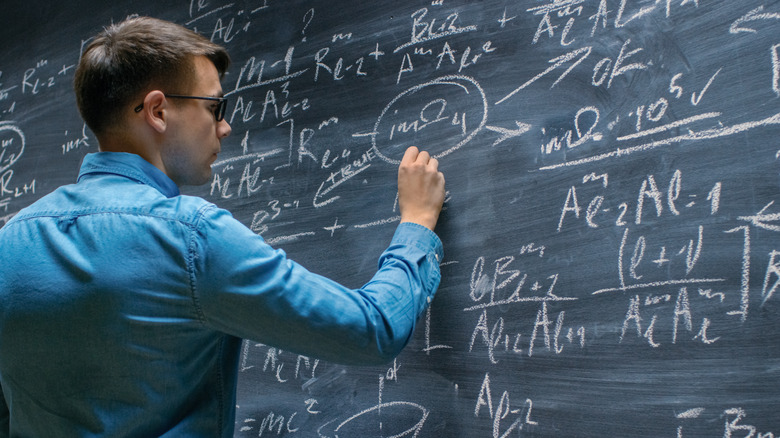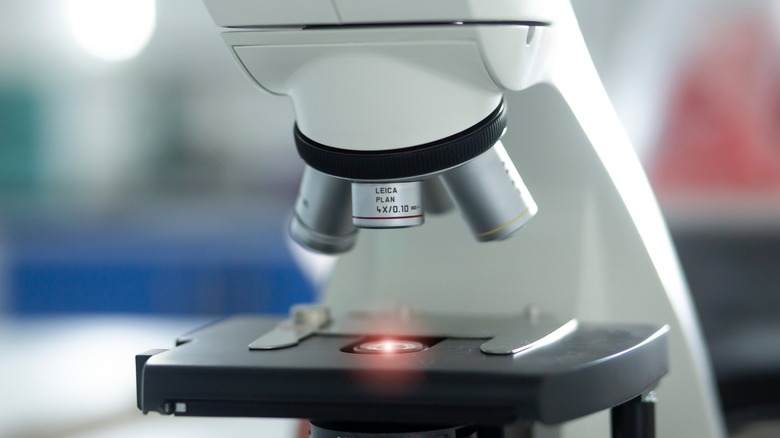Music Legend Joan Baez And Her Unexpected Connection To A Groundbreaking Invention
Joan Baez is a folk music icon. She was particularly popular in the 1960s, according to Britannica, when some of her most famous songs were released, including "We Shall Overcome," and "It's All Over Now Baby Blue," (via Biography). Her first album, "Folksingers 'Round Harvard Square," came out in 1960, and soon was churning out albums at a rapid rate.
She didn't restrict herself just to musical pursuits, either: Baez, who was raised a Quaker, was firmly against the Vietnam War, and protested the U.S.'s involvement in the engagement regularly (via Biography). Moreover, she was active in the Civil Rights movement, with "We Shall Overcome" even being used as a rallying song amongst activists, Biography reports.
Among the famous figures in Baez's life include Bob Dylan, who Baez dated at the beginning of his career. But, it was Baez's father, who also deserves note as — even though he wasn't a musician — he achieved excellence in his own field of physics: He co-invented the X-ray reflection microscope as a graduate student at Stanford University (via The New York Times).
Who was Albert Baez?
Joan's father, Albert Baez, was born in Mexico in 1912, according to Crafton Hills. Later, Baez and his family immigrated to the United States where Baez attended school, heading off to college to study physics at Drew University. He went on to get his master's degree at Syracuse, and then a Ph.D. at Stanford.
Baez was an established physics teacher, a profession he pursued because he didn't want his work to be used in the field of war, according to The New York Times. Baez, born a Christian, converted to become a Quaker alongside his wife before they had their three daughters (via Stanford University). He took his career global, teaching at foreign universities including the National Polytechnic Institute of Mexico and Baghdad University. Stateside, he worked for MIT and UC Berkeley, among other schools, Stanford notes. But, despite his strong science background, he never pushed his daughters to follow in his footsteps: He encouraged their desire to become musicians, instead, according to Crafton Hills.
But, Alert Baez's biggest accomplishment didn't happen while he was teaching at any of these schools. Instead, it was while he was studying for his Ph.D. that he and a fellow scientist, Paul Kirkpatrick, invented the X-ray reflection microscope.
How the X-ray reflection microscope works
In modern times, there are three main types of microscopes: light microscopes, X-ray microscopes, and electron microscopes, as Science Direct notes. Electron microscopes are the most precise, with a -0.05 nanometer resolution (per UC Santa Barbara) but they can sometimes destroy or damage the samples being viewed. X-ray microscopes provide a good alternative that is still very exacting, focusing on objects within a range of 1- to 10- nanometers (via Britannica) but they're also much gentler and do less damage.
Baez's work on X-ray microscopes was part of his thesis, according to Stanford University. The microscope uses mirrors to focus very bright X-ray beams, allowing the viewer to see the sample in detail. Baez also created zone plates, a technology that focuses X-rays through diffraction, Stanford notes.
Medical and astronomical pursuits like examining live cells are especially well-suited to X-ray microscopes, according to The New York Times. In recent years, the use of X-ray microscopes has increased as scientists are rediscovering the benefits of this technology, Britannica reports.


